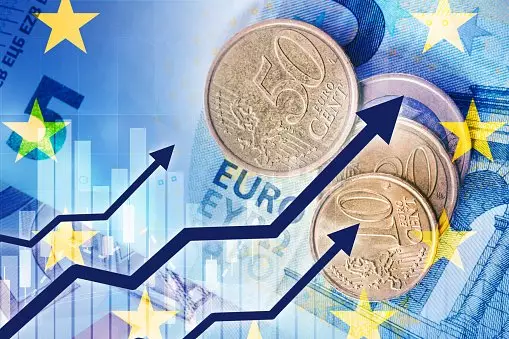The euro’s recent rise above the 1.1700 mark against the US dollar marks a significant pivot in currency markets this year. This milestone, last seen back in autumn 2019, reflects more than just typical market fluctuations—it signals deeper undercurrents affecting global finance. While the superficially straightforward explanation credits a weakening dollar sparked by US political dynamics, the reality deserves a closer look. It is critical to challenge the narrative that the euro’s ascent is merely a passive beneficiary of US policy controversies, because such an interpretation neglects the eurozone’s internal dynamics and ignores the complexity of currency movements.
The Dollar Under Pressure: More Than Just Trump’s Comments
Much attention has been given to President Trump’s vocal criticism of Federal Reserve Chair Jerome Powell and reports suggesting potential changes in Fed leadership. True, these political tensions add uncertainty and often rattle markets, pushing the dollar down as investors question US monetary policy stability. However, it would be an oversimplification to place the blame squarely on presidential statements. The dollar’s vulnerability stems from broader macroeconomic challenges facing the United States—rising debt levels, inflationary pressures, and evolving trade policies all play crucial roles. Trump’s rhetoric may have provided a catalyst, but it is the underlying structural issues that render the dollar susceptible to depreciation.
A Closer Look at Eurozone Resilience
It’s easy to overlook the eurozone’s own economic resilience while focusing on US troubles. The upward price channel recently observed in EUR/USD charts indicates that the euro is not just drifting upwards; it is showing a persistent and technically supported rally. This suggests growing confidence in the eurozone’s growth prospects and monetary policy, even in the face of persistent challenges such as geopolitical uncertainties and energy crises. Stronger-than-expected economic data from major economies in Europe, combined with the European Central Bank’s pragmatic approach, underpin the euro’s strength. Therefore, seeing the euro merely as a “safe-haven” alternative misses the proactive factors pushing it higher.
Technical Signals and Market Psychology
Analyzing the price action reveals interesting insights into trader psychology. Midweek consolidation near the upward channel’s median followed by a vigorous breakout above the 1.1630 resistance level showcases bullish momentum. Yet, the appearance of long upper wicks on recent candles signals hesitation among buyers as selling pressure mounts near the channel’s upper boundary. This suggests that while the euro is strong, the current upward trend may face short-term pauses. Traders should watch for potential consolidations around the midpoint level, reflecting the market’s struggle to balance optimism with caution amid a volatile geopolitical backdrop.
Looking Beyond Noise: The Importance of Fundamentals
Ultimately, currency trends derive much of their longevity from fundamental economic changes, not short-lived political drama. Breakthroughs or breakdowns in EUR/USD will likely hinge on central bank decisions, inflation data, and global trade developments. Both the European Central Bank and the Fed remain key players whose policies will dictate whether the euro continues its ascent or if the dollar reclaims lost territory. Market participants must therefore sift through headlines and focus on these material drivers to navigate the evolving forex landscape meaningfully.

